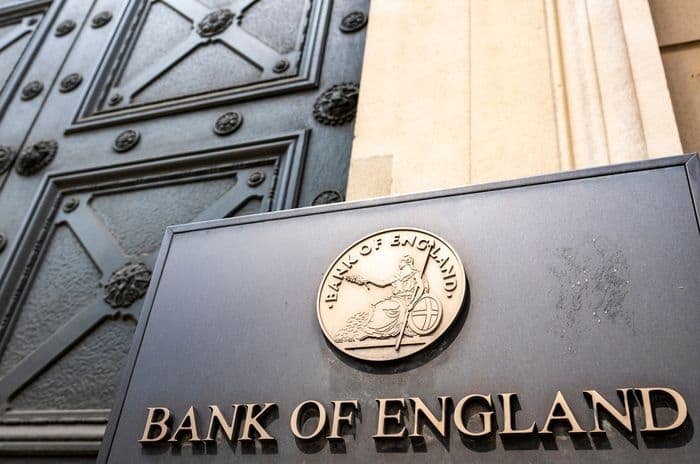Home > Money > News > Bank of England launch widest stress tests to date
Bank of England launch widest stress tests to date
THE Bank of England have announced that they will be adding an additional scenario to their annual stress tests for the first ever time, indicating the rising uncertainty the UK economy is currently facing from Brexit and rising household debt.

As usual, the BoE will be simulating [PDF] a range of sudden shocks to the economic and monetary system, which for this year will involve global recessions, a 33% fall in house prices, and a dramatic rise in interest rates.
Yet in addition to this scenario, the Bank will also be running an "exploratory" stress test, which will examine the effects of longer term economic stagnation, including minimal interest rates and minimal growth.
And while it's certainly a good thing that the BoE are aiming to be as prepared as possible, their expanding of their stress tests like this suggests that they have no clear idea as to how the next few months and years are going to unfold.
Stressing the stresses
Is borrowing put my home at risk?
Routes to paying off loans and cards
Managing debts: first five steps
That's because they're exploring two almost opposing scenarios, one in which interest rates skyrocket and economies crash, and one in which interest rates remain close to 0% and economies continue to muddle along.
The first is the more worrying one, insofar as it builds upon the Bank's previous warnings that household debt is rising at "close to the fastest growth rate since the global financial crisis".
In particular, it imagines greater economic stresses than the "annual cyclical scenario" (ACS) for 2016, with global GDP falling by 2.4% rather than 1.9%, UK GDP falling by 4.7% rather than 4.3%, and with residential property prices dropping by 33% rather than 31%.
And while these are all worst-case scenarios, the Bank admits that they've been worsened in view of how the economic climate has lately become more unpredictable and potentially ominous.
They write, "where imbalances in credit and financial markets have increased (decreased), the stressed outcome may be more (less) severe".
Imbalances
Such imbalances, once again, stem largely from a rise in the amount of money households are borrowing relative to their incomes, which at 133% indicates that a sudden interest rate rise or a spike in unemployment will make many of them unable to pay back what they owe to lenders.
This is where the risk is involved, although it's somewhat reassuring to note that the growth rate in consumer borrowing did fall in the final month of 2016, slipping from 1% to 0.5%.
Still, this is only one month's data, and it's made less rosy by the news that inflation has increased to 2.3% while wage growth has slowed from a high of 2.6% to the very same 2.3%.
Worse still, while inflation is predicted to rise in 2017 to 2.8% or even 3%, wage growth has been predicted to stall or even move in reverse, with the Resolution Foundation recently forecasting that this decade will be the worst for pay growth in 210 years.
What this potentially means is that, as the cost of living overtakes wages, people will have less money to spend in real terms. With less money to spend, it's possible they'll use credit cards and personal loans more, putting themselves into greater debt.
And with greater consumer borrowing and greater inflation comes greater pressure on the BoE to increase interest rates, which will potentially result in people defaulting on their various loans.
In turn, this would have big repercussions on banks and the wider UK economy, risking another recession in the vein of 2007-8.
Safety measures
It's in the context of such a risk that the BoE are running their two "scenarios", although the Bank state that neither of them are forecasts, but rather "tail-risk" simulations "designed to be severe and broad enough to assess the resilience of UK banks to adverse shocks".
While it's reassuring to know that the Bank are preparing themselves and the UK financial industry for hypothetical shocks, their defences against a potential economic dive are and will always be incomplete.
That's because, while they can reset interest rates and influence people's borrowing in this way, interest rates are only one factor in determining how much people spend and how much they go into debt.
Debt is a big problem in the UK, with the rate of insolvencies in Britain rising by 13.1% in 2016, yet it's caused just as much by rising housing costs and inadequate working-age incomes as by interest rates.
As such, it's clear that one of the most effective ways of pre-empting an economic downturn fuelled by debt is for the Government to do something about housing costs, wages, benefits, and the creation of full time jobs that don't involve the gig economy or zero hour contracts.
In one way or another, they have tried to address most of these issues. However, so far their interventions haven't had much effect, since debt is still rising to unsafe levels, and the BoE is still planning for the worst.
Get insider tips and the latest offers in our newsletter
Get insider tips and the latest offers in our newsletter

We are independent of all of the products and services we compare.

We order our comparison tables by price or feature and never by referral revenue.

We donate at least 5% of our profits to charity, and we aim to be climate positive.
Latest News

26 October 2022
Cost of living showing worrying trends in affordability
16 June 2022
FCA warn lenders on cost of living difficulties


